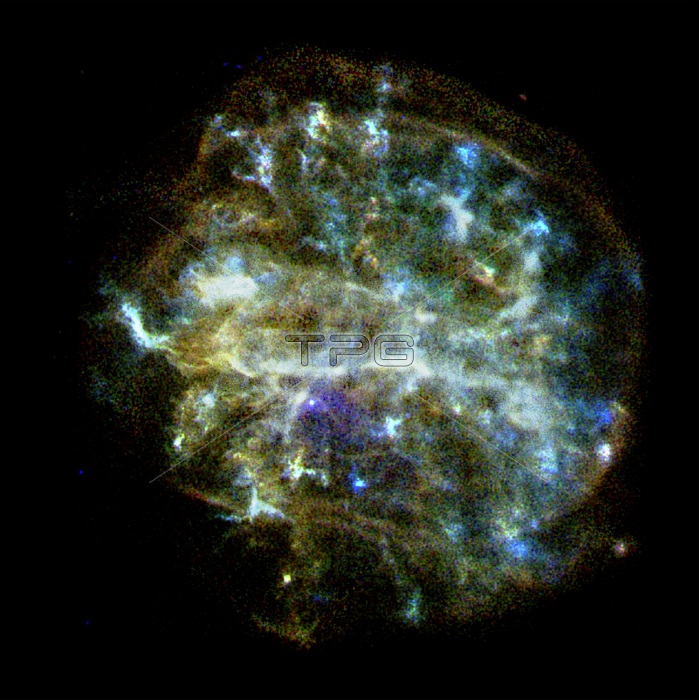
NASA's Chandra X-ray Observatory has captured a spectacular image of G292.0+1.8, a young, oxygen-rich supernova remnant with a pulsar at its center surrounded by outflowing material. Astronomers know that pulsars are formed in supernova explosions, but they are currently unable to identify what types of massive stars must die in order for a pulsar to be born. Now that Chandra has revealed strong evidence for a pulsar in G292.0+1.8, astronomers can use the pattern of elements seen in the remnant to make a much closer connection between pulsars and the massive stars from which they form. This Chandra image shows a rapidly expanding shell of gas that is 36 light years across and contains large amounts of elements such as oxygen, neon, magnesium, silicon and sulfur. Embedded in this cloud of multimillion degree gas is a key piece of evidence linking neutron stars and supernovas produced by the collapse of massive stars. Standing out at higher X-ray energies, astronomers found a point-like source surrounded by features strikingly similar to those found around the Crab Nebula and Vela pulsars. These features, together with the X-ray spectrum of the central source and surrounding nebula, provide strong evidence that a rapidly spinning neutron star is responsible for the central observed X-radiation.
| px | px | dpi | = | cm | x | cm | = | MB |
Details
Creative#:
TOP22316437
Source:
達志影像
Authorization Type:
RM
Release Information:
須由TPG 完整授權
Model Release:
N/A
Property Release:
No
Right to Privacy:
No
Same folder images:

 Loading
Loading